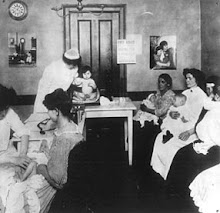Ellis Island was the main immigration station from 1890 to 1954. It is an island located in New York Harbour, in the upper bay just off the New Jersey coast (it belonged to New York State and to New Jersey State; now it is under jurisdiction of the National Park Service). It´s area has increased eight times over its original island, that was New York´s duty; the artificial portion is surrounding the first one. This creates a problem with competences between the two states, since both have a tax number for their portion of island. Nowadays, though the reason was given to New Jersey for the whole island, it is part of the National Park Service, like a Federal property. None of the two states have administrative responsibility.
More than twelve million immigrants entered the USA through Ellis Island, many others were deported. Although President Benjamin Harrison designated this construction as the ideal place to receive immigrants in 1890, it didn´t work as its objective until 1892. Besides, the island had its own previous history; it had had several denominations, like “Kioshk” or “Gull” Island, called in this way by local Indian tribes. Not only these nouns, but also “Little Oyster”, “Dyre”, “Bucking” or “Anderson´s” Island. But nowadays everybody knows it as “Ellis” Island because it was property of Samuel Ellis in the 1770´s. It was also harbour fort, a jetty for pirates, an ammunition depot and a key factor for the British during the Independence War before be converted to a Federal immigration centre. In Ellis Island (Fort Gibson in 1812), a parapet for three tiers of circular guns was constructed in order to make it part of a defence system next to Castle Clinton (at the Battery), Castle Williams (on Governor´s Island), Fort Wood (on Bedloe´s Island) and two earthworks forts (at the Verrazano Narrows).
The first immigration centre was Castle Clinton (or Castle Garden), from 1855 to 1890. There were almost eight million immigrants that enter the USA through this other island. While the Federal Government was constructing the new immigration centre in Ellis Island, the Barge Office (at the Battery) was used as the second and provisional immigration station. The third centre was Ellis Island, inaugurated in 1892, but in 1897 was burned completely by a fire. The new building was designed by architects Edward Lippincott Tilton and William Alciphron Boring, opened in 1900. This building obtained the gold medal at the 1900 Paris Exposition thanks to its beauty, design and originality (and for being a fireproof construction). In 1954 it was closed definitely.
The most important port for immigrants was New York Harbour, but it wasn´t the unique, there were others like San Francisco, Baltimore, Boston or Miami. Ellis Island is bound to sea companies, such as White and Red Star, for example.
Ellis Island was rising each year. There were more than one million of immigrants processed by year. The building was completed by hospitals, contagious diseases wards (inside or outside the hospitals) or kitchens. But always there weren´t enough bunk beds.
Apart from its use for immigrants, the island has had more utilities; during the World War I, it was used to intern German mariners and enemies together with ill USA soldiers that returned from Europe. The immigrants were processed on board ships or at the docks. The rest were transferred to other ports. When the war finished, Ellis Island returned to its work with immigration. In 1924, after the Immigration Act of that year, the processing of immigrants (medical and administrative), as well as refugees and asylum seekers, was diverted to embassies and consulates; those had to give a report on new immigrants. Ellis Island was from this moment a detention and deportation centre for people with problems with their documents, refugees and the displaced.
From the World War II, the main building operated as a Coast Guard training base, too. The rest of constructions were assigned to an internment camp for war prisoners, specially for people related to Axis forces, as well as deportation station.
The last utility was in order to hold members of Comunism or Fascism, from 1950 (due to the Internal Security Act of that year) to 1954, when it was closed. In 1965, the island was declared as a part of the Statue of Liberty National Monument. It was reopened between 1976 and 1984; this year was again closed in order to repair its installations. From 1990 it is the Ellis Island Immigration Museum and it´s visited by two million people each year. There are ferries connecting Jersey City and New York City.







































No hay comentarios:
Publicar un comentario